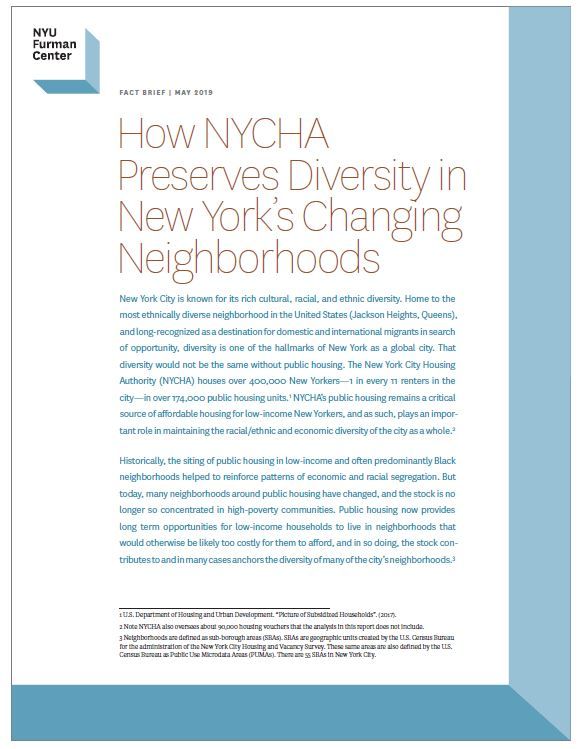
How NYCHA Preserves Diversity in New York’s Changing Neighborhoods.

In The Color of Law, author Richard Rothstein presents in great detail how government policies led to a “state-sponsored system of segregation”. A major component of this system was the development and intentional segregation of public housing developments throughout the country. Yet today, as some New York City neighborhoods are experiencing changes in neighborhood racial makeup, a new fact brief published by the NYU Furman Center outlines the critical role public housing plays in preserving racial, ethnic, and economic diversity in the city’s gentrifying and higher-income neighborhoods.
The brief builds on earlier research by the NYU Furman Center outlining NYCHA’s outsized role in housing the lowest-income New Yorkers. As New York City’s neighborhoods continue to undergo shifts in racial and economic makeup, the developments that once segregated residents and concentrated poverty are now helping maintain neighborhood diversity and providing their residents with access to opportunity. Research findings have pointed to the importance of creating subsidized housing in rapidly gentrifying areas to mitigate against re-segregation of neighborhoods.
In 2017, a third of the city’s public housing units could be found in the ten most economically diverse neighborhoods, yet only a fifth of all housing units were located in those ten neighborhoods. In several neighborhoods including Astoria, the Lower East Side/Chinatown, Bedford-Stuyvesant, and East Harlem, the racial diversity would decrease significantly without public housing residents.
Previous research conducted by the NYU Furman Center and Abt Associates shows that children living in public housing units located in more affluent neighborhoods scored higher on standardized math and reading tests, and adults had higher earnings. However, the research also showed that public housing residents did not always feel connected to their neighborhood. In addition, the changing composition of nearby stores and the rising costs of goods can feel like pressure to move out of the neighborhood even if housing costs remain stable.
On the final day Fair Housing Month, this brief provides evidence of the critical role NYCHA plays in maintaining diverse neighborhoods and providing access to housing and resources for New York City’s poorest families. As City leaders engage in continued discussions about the future of public housing, this brief joins the long body of research and evidence that NYCHA is an anchor for many of New York City’s residents and neighborhoods.


